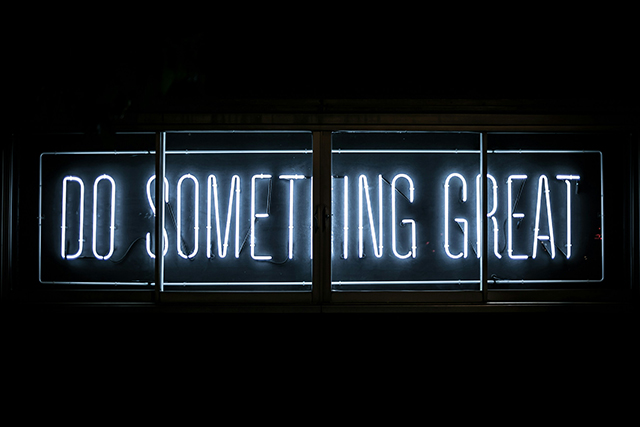What to Expect from a Social Media Marketing Agency: Essential Services for Business Growth

In today’s digital landscape, having a strong presence on social media is no longer optional—it’s essential for business growth. Whether you’re a small startup or an established brand, a social media marketing agency can help you navigate the ever-changing world of online engagement and maximize your reach. But what exactly can you expect when partnering with one?
This article breaks down the essential services a social media marketing agency provides and how these services can help scale your business.
1. Social Media Strategy Development
A successful social media presence begins with a well-crafted strategy. A social media marketing agency will conduct in-depth research to create a plan tailored to your business goals. Here’s what this includes:
A. Identifying Business Objectives
The agency will work with you to define clear objectives, such as:
- Increasing brand awareness
- Driving website traffic
- Boosting sales and lead generation
- Enhancing customer engagement
B. Audience Research & Persona Development
Understanding your audience is crucial for social media success. Agencies analyze factors like:
- Demographics (age, gender, location)
- Interests and behaviors
- Pain points and needs
This research helps tailor content and advertising strategies that resonate with your target market.
C. Competitive Analysis
A thorough competitive analysis allows agencies to:
- Identify industry trends
- Analyze competitors’ strengths and weaknesses
- Develop strategies to set your brand apart
With this data, an agency ensures your brand is ahead of the curve in your industry.
2. Content Creation & Management
Quality content is at the heart of any successful social media campaign. Agencies create compelling content that drives engagement and converts followers into customers.
A. Custom Content Creation
Depending on the platform and your business niche, agencies provide:
- High-quality graphics and videos
- Captivating captions and storytelling
- Branded posts and infographics
- Memes and interactive content
B. Social Media Calendar & Scheduling
A well-planned content calendar ensures consistency. Agencies manage:
- Posting schedules across multiple platforms
- Optimal posting times for maximum engagement
- Platform-specific content adjustments
This prevents gaps in content while maintaining a cohesive brand voice.
C. Community Engagement & Interaction
Beyond posting content, agencies engage with your audience by:
- Responding to comments and messages
- Encouraging discussions and interactions
- Managing customer service inquiries
This strengthens brand trust and builds meaningful relationships with your audience.
3. Social Media Advertising & Paid Campaigns
Organic reach can be limited, which is why paid social media advertising is crucial. A social media marketing agency will create targeted campaigns that maximize ROI.
A. Ad Strategy Development
Agencies tailor advertising campaigns based on:
- Your budget and objectives
- Target audience segmentation
- A/B testing for best performance
B. Running Multi-Platform Ad Campaigns
Different social media platforms require different advertising approaches. Agencies manage:
- Facebook & Instagram Ads (for brand awareness and conversions)
- LinkedIn Ads (for B2B marketing)
- Twitter Ads (for engagement and trending topics)
- TikTok Ads (for viral and Gen Z audiences)
C. Performance Tracking & Optimization
To ensure success, agencies monitor ad performance and adjust strategies using:
- CTR (Click-Through Rate) analysis
- Conversion rate tracking
- Cost-per-click (CPC) adjustments
This ensures every advertising dollar is well-spent.
4. Influencer Marketing & Brand Partnerships
Collaborating with influencers can significantly boost brand exposure. Agencies handle:
A. Influencer Identification & Outreach
They find influencers who align with your brand by considering:
- Niche relevance
- Engagement rate (not just follower count)
- Authenticity and audience trust
B. Managing Campaigns & Negotiations
Agencies take care of:
- Negotiating contracts and payment
- Coordinating sponsored content
- Ensuring influencer compliance with brand guidelines
C. Performance Measurement
They analyze the impact of influencer campaigns through:
- Engagement rates
- Follower growth
- Conversions and ROI tracking
By leveraging influencers, brands can reach highly engaged audiences in an authentic way.
5. Social Media Analytics & Reporting
Success on social media isn’t just about content—it’s about measuring performance and optimizing strategies. Agencies provide:
A. Real-Time Performance Monitoring
They track key performance indicators (KPIs) like:
- Follower growth trends
- Engagement rate (likes, shares, comments)
- Traffic generated from social platforms
B. Monthly Reports & Insights
Agencies offer detailed reports with:
- Data-driven insights on what’s working
- Areas for improvement
- Recommended strategy adjustments
C. Adapting Strategies Based on Data
Based on analytics, agencies pivot strategies to maximize impact. For example, if video content performs better than static posts, they’ll adjust the content mix accordingly.
6. Reputation Management & Crisis Handling
Online reputation can make or break a brand. Agencies offer proactive reputation management to protect and enhance your brand image.
A. Monitoring Brand Mentions
Using tools like Google Alerts, Brandwatch, and Hootsuite, agencies:
- Track brand mentions across social platforms
- Identify sentiment trends (positive, neutral, or negative)
- Address potential PR issues early
B. Managing Negative Feedback & Crisis Control
In case of a crisis, agencies:
- Respond professionally to complaints
- Issue public statements if necessary
- Implement damage control strategies
C. Encouraging Positive Engagement
Agencies help build brand credibility by encouraging positive customer interactions and sharing success stories.
7. Growth Strategies & Emerging Trends
Social media is constantly evolving, and agencies ensure your brand stays ahead of trends.
A. Experimenting with New Content Formats
Agencies test:
- Live streaming
- Instagram Reels & TikTok trends
- AI-driven chatbots for customer service
B. Adapting to Algorithm Changes
With constant updates in social media algorithms, agencies adjust strategies to maintain visibility and organic reach.
C. Expansion to New Platforms
If a new social media platform gains popularity, agencies will guide businesses on when and how to join for maximum impact.
Final Thoughts: Is a Social Media Marketing Agency Right for You?
Partnering with a social media marketing agency can significantly enhance your brand’s online presence, drive sales, and foster customer loyalty. Whether you’re looking for strategy development, content creation, paid ads, or reputation management, these agencies provide the expertise needed to navigate the ever-changing social media world. Consider this useful site for a marketing agency in social media.



